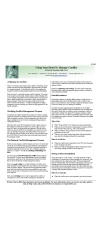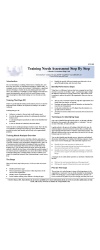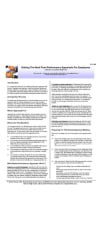Less Makes Better Communication
Why LESS Communication Is More Effective To Make Your Point
Whether we are trying to communicate a point face to face, on the Internet, on the phone, or to groups of people, many of us have a tendency to use too many words.
That happens two ways. First, we say the same things in different ways during a conversation. Second, we use too many instances of communication about our point — i.e. multiple phone conversations, tweets, articles, etc.
Why It Doesn’t Work
Somehow it “feels” like the more we restate our position, or our point, the more likely the person or people to whom we are speaking will be more likely to “get” it. To a certain extent that’s true, particularly when the topic is complex and there is a need to go through things more slowly, or in different ways to help others understand.
However consider the various downsides.
Dilution During Conversation:
When your central point – that nugget you need to get across, is surrounded by other points largely unrelated to that central point, the power of that point becomes diluted. Listeners and readers have trouble determining the most important thing you are trying to communicate, and can come away with very individualized meanings. That’s because they focus on different parts of what you say.
Solution: Talk and write “LEAN”. Cut out extra words, extra sentences. Make your key points royalty, and don’t surround them with courtiers. Your key point is king.
The Branching Effect:
The branching effect refers to the tendency for conversations to shift or drift away from the starting point or central point. It often happens online and/or in person during interactions.
Typically, one person will mention something tangentially related to the “topic”, and someone else will grab onto that and follow the tangent. The result is that the original thread gets lost, as does the “point” of the interaction.
Solution: Keep the clutter low. Embelish your points with a minimum of tangential material. Embellishments are the condiments of communication.
The Trump Effect (Or How Repetition Makes You Sound Stupid)
In the 2016 election campaign, Trump illustrates what happens when you surround your points with repetitive words and phrases that add nothing. While there is a purpose for repetition when it comes to communicating to groups, the repetition can also make the speaker appear stupid, lost, rambling, and at a loss for anything more significant to say.
When the rhetorical devices attract more attention than what you want to communicate you fail. This is often the case with Trump, who uses repetitive questions to audiences, or repeats the same phrase three times in succession.
Solution: People do this when they speak because they are buying time to think about what to say next. That’s pretty standard. Or, they think this kind of repetition will arouse emotion (which is can do). The solution is to be clear about your key points so you no longer need to use these speaking devices to buy thinking time.
The Boredom Factor Of The One Trick Pony
We all have our favorite topics about which we talk about in our conversations and in social media. The problem comes when we oft return to those favorite topics over and over again.
It’s common online. You’ve seen it. Those people who comment a lot on social media on posts and updates, and somehow always manage to end up talking about the same few things — their “agendas”, despite the fact that they’ve already said all that they have to say.
While it is important to make your points visible to new people who might come along, remember that repeating yourself in this way in various communication instances is boring as heck. Who wants to read or listen to the same thing from the same person on a regular basis?
Solution: Move on. Remember that your favorite topic(s) are YOUR obsession, not that of others. Communicate not just for your own ego, but consider the readers, or listeners and how they might react to hearing the same thing AGAIN.
The Bottom Line On Less Is More
- Make your key point or points stand out. Your key point should stand like a tree in an open field, not a bush among millions of others trees in the forest.
- Balance your agenda with the needs, concerns and wants of your readers and listeners. Few want to hear you say the same things over and over again.
- Stay focused. Unfocused thinking about what we really want to communicate creates a situation where we feel it’s necessary to throw mud at the wall hoping some will stick. More thinking ahead of time, and keeping the communication goal in mind when preparing and communicating is a key to doing so using less rather than more.






